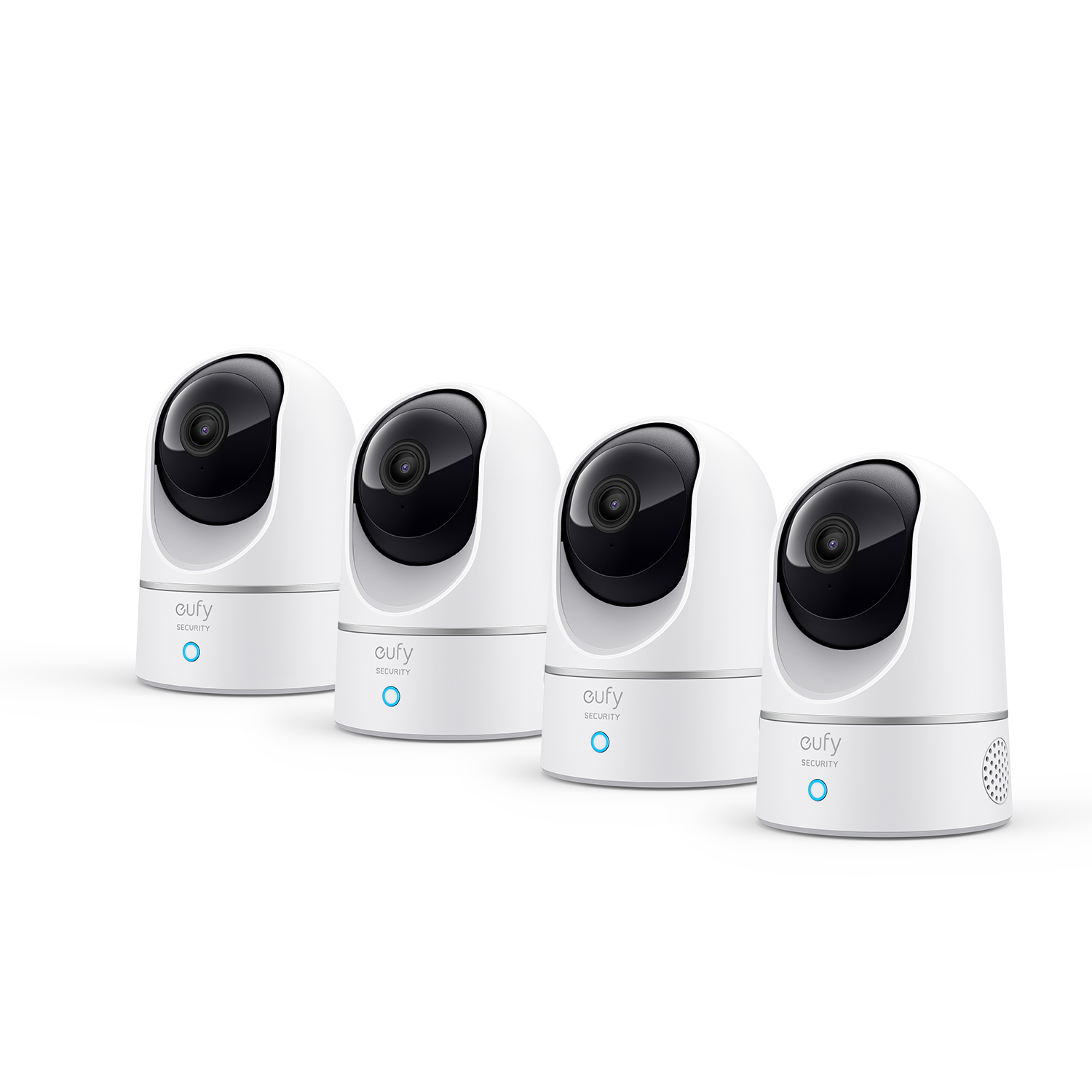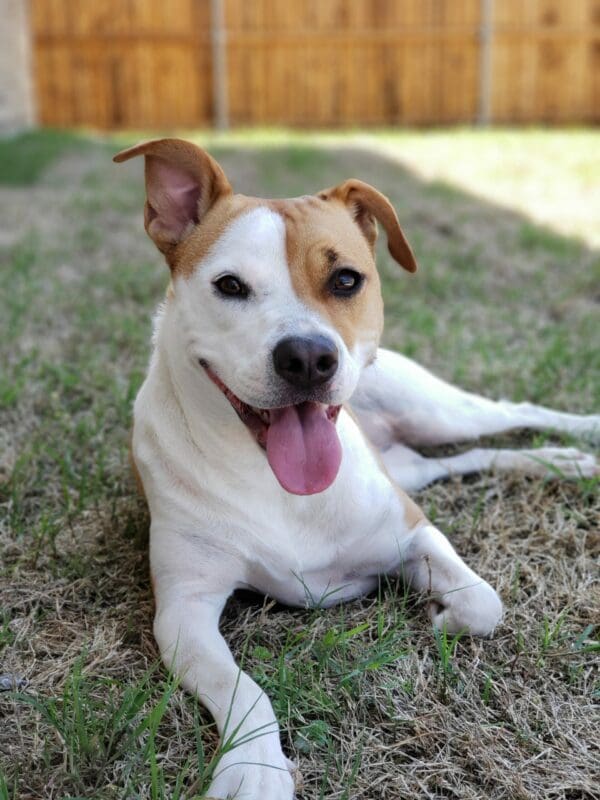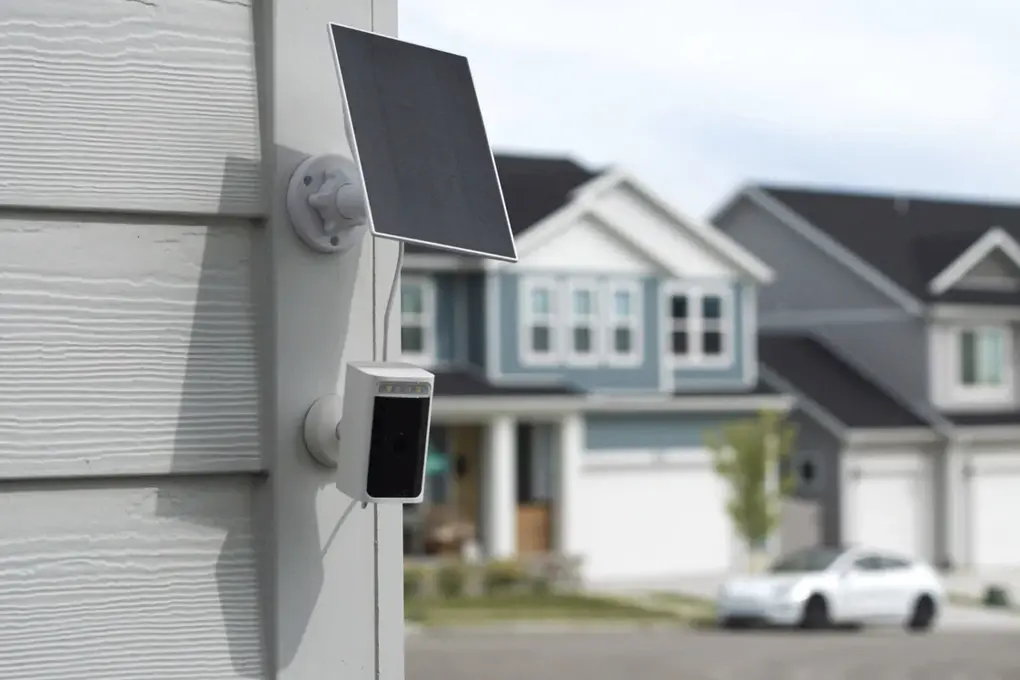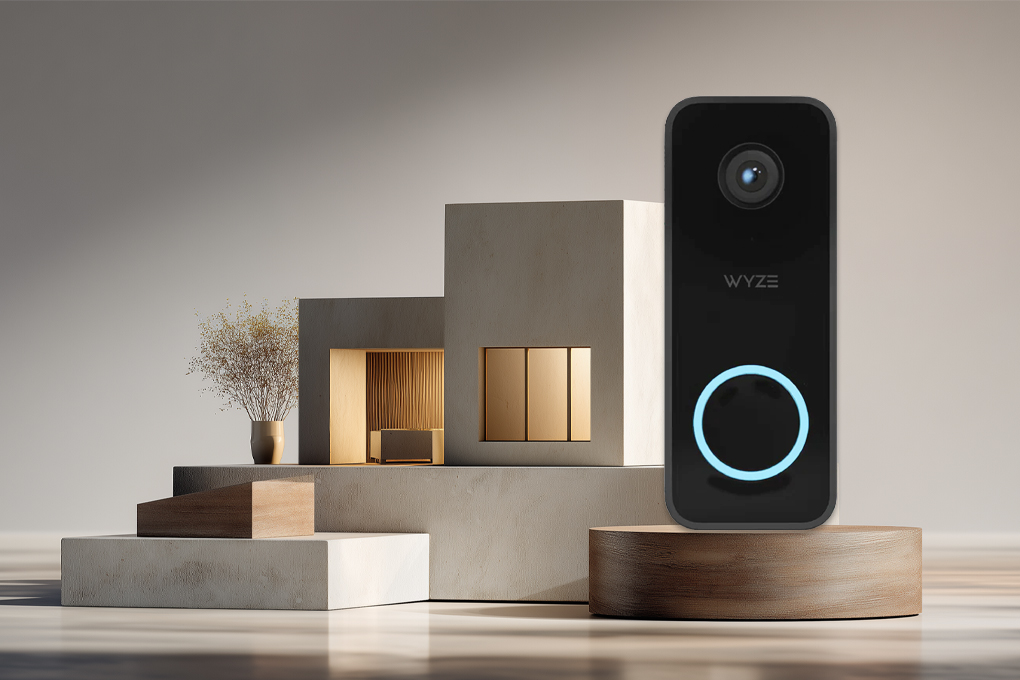According to the ASPCA, approximately 23% of American households acquired a dog during the pandemic, leading to increased demand for pet monitoring solutions. As more companies implement return-to-office policies, finding effective ways to monitor pets has become a priority for millions of dog owners.
Key Pet Monitoring Considerations:
- Separation anxiety affects an estimated 13-18% of dogs (AVMA data)
- Video monitoring allows real-time intervention during problem behaviors
- Two-way audio enables remote communication with pets
- Smart features can help identify unusual activity patterns
- Motion detection aids in preventing escape attempts
Modern pet monitoring has evolved beyond basic surveillance. Today’s systems combine behavior monitoring with interactive features, helping ensure your dog stays safe and content when home alone.
This comprehensive guide examines critical features:
- Video quality and coverage
- Audio communication
- Smart alert capabilities
- Ease of installation
- Value for money
Whether you’re returning to the office or managing occasional absences, let’s analyze how smart cameras can help protect your canine companion and provide peace of mind.
Table of Contents
Key Article Takeaways:
- 23% of American households got dogs during the pandemic, with 13-18% of dogs now experiencing separation anxiety as owners return to offices, driving demand for smart monitoring solutions.
- Top recommendations include Furbo 360° Dog Camera (featuring treat dispensing and bark alerts) and Eufy Solo IndoorCam P24, both offering two-way audio and real-time monitoring capabilities.
- Beyond basic cameras, effective pet monitoring systems now include smart motion sensors that ignore pet movement, temperature monitoring, and smoke detection – creating comprehensive safety solutions for pet owners.
Home Security Includes Pet Safety
Keeping your pampered pooch safe while you’re away from home doesn’t have to be difficult. It starts with understanding the basics of dog owner home safety security tips. While crate training and children’s gates work for some dogs, others will tear and claw their way out to roam the house. There’s more to keeping dogs safe than just confining them. Hazards in your home can also be safety threats to them. Did they break into the pet food cabinet? What if your pet escapes?
We’re starting a new series called “Pet Owner Safety Tips” to help pet owners navigate home and pet safety risks. In this first article, we’ll focus on the best security cameras for dogs. Why security cameras? As more people return to the office, dogs stay home during work hours. This situation can cause separation anxiety for both pets and owners. Security cameras help everyone feel safer when dogs are home alone. This applies whether it’s a quick trip to the supermarket or a full workday. Security cameras can pet-proof a home and let your furry friend live a safe, healthy life.

Indoor Cameras
For Extra Peace of Mind
When you’re training a young pet or concerned that a rambunctious dog may get into trouble, an indoor camera can help keep pets safe and pet owners from worrying. Today’s indoor cameras, especially those designed with pet owners in mind, help with training, containing the damage, and preventing injuries.
Our top recommendation for indoor cameras, in general, is the Eufy Solo IndoorCam P24. Dog owners have another fantastic option for monitoring and interacting with their pups. Furbo is one of the most trusted and well-known providers of pet-centric household tech. With their Furbo 360 Degree Dog Camera, you can:
- check in on your pet from your mobile app
- get alerted when your dog barks
- communicate through the app to the camera and speaker
- remotely control the device and toss your pet a treat
This checks a lot of boxes for worried pet parents who leave their furry friends at home. The best part is that this high-tech camera is a cinch to install. Simply plug into a wall outlet, download the app, and connect the camera and app to your wi-fi.

With either the Eufy or Furbo option, you’ll be equipped with a reliable way to check in on your pet when you’re away from home. Depending on how much interaction and supervision your pet needs, you can choose which camera works best for your lifestyle.
Outdoor Cameras
Ensure That You Have Your House Covered
Some people bring dogs home to act as a security system. Burglars are less likely to target homes with dogs. However, not every dog has the ability or will want to fight off an intruder. That’s why our experts recommend shoring up your home’s security and keeping pets safe with outdoor cameras.
If your home already has a home security system, invest in the outdoor cameras that work with your system. It’s much easier to work within a system you already have so that all the components function in harmony. The most popular DIY and professionally installed security systems all include exterior/outdoor cameras that you can place in the most strategic places around your home’s exterior.
If you don’t currently have a home security system but are interested in choosing outdoor cameras, our experts have several recommendations, particularly when it comes to considering a dog’s safety as well. If you have a fenced backyard and/or dog doors to consider, outdoor cameras can be especially helpful. Bonus points: they can help you keep an eye on your house in case of extreme weather!
SimpliSafe
For the person looking for an easy system to protect their home while their pet is inside, we recommend SimpliSafe. It is one of the best DIY systems on the market right now, putting the power of personalization in your hands. If you want to go with a full system, you can start with the Essentials Kit which includes an indoor camera. However, SimpliSafe also offers the capability to buy one-off equipment or add on to your system later. Their Wireless Outdoor Security Camera offers:
- 1080p HD video
- A 140° ultra-wide field of view
- Digital zoom
- Full-color vision at night
Pet owners can rest easy knowing that their cameras won’t show grainy blurry images at night. They’ll actually be able to see what’s going on around their homes when they want to check in.
Abode
For the owner who wants a less involved system, we recommend Abode. Another DIY solution but with on-demand monitoring options, you won’t need to worry about getting stuck in a contract. When it comes to dogs, the Abode Cam 2 is the way to go. It can be used inside or outside your home, giving you the flexibility to change where you place your cameras depending on your pet’s needs. For example, if Fido tends to get his head stuck in the dog door, you could put the Abode Cam 2 inside near your front door or outside facing the front of your house. They are also launching a video doorbell option in the near future, meaning that you can add it to your bundle. The video doorbell function will allow you to identify and speak with dog walkers, pet sitters, or delivery people near your front door. The best part? The Abode Cam 2 doesn’t require the full Abode system to work. So if you are looking for a low-investment, low-cost way to keep an eye on your home and pets, Abode has the cameras for you.
We don’t recommend it, but you can also go a low-tech route and only install cameras without any additional infrastructure. Without an app, alarms, sensors, and more, your camera(s) just provide a bird’s eye view of the action. You won’t get alerts to suspicious activity, and no one will call the police or fire department on your behalf when the smoke detector goes off or a glass sensor hears broken windows. This is not the strongest option for protecting your pets.

Additional Security System Components to Consider for Your Dog
-
Secure Loose Items: Keep cables and small objects out of reach to prevent chewing and choking hazards.
-
Create a Comfortable Space: Designate a cozy area with a soft bed where your dog can relax.
-
Dog-Proof the Kitchen: Use dog-proof trash cans and store toxic foods out of reach.
-
Install Pet Gates: Limit access to certain areas of your home to keep your dog safe.
-
Minimize Clutter: Store toys in accessible baskets and keep clothing out of reach.
-
Use Non-Slip Mats: Place mats near food and water bowls to prevent spills.
-
Conduct Regular Yard Checks: Inspect your yard for potential hazards like sharp objects or toxic plants.
-
Secure Fencing: Ensure your yard is enclosed with a sturdy fence.
-
Childproof Locks: Install locks on cabinets to keep cleaning supplies out of reach.
-
Training & Routine: Establish a consistent routine for feeding and walks.
Personal Insights While Testing
During my time testing various security cameras designed for pet monitoring, I found that the Eufy Indoor Cam C120 stood out due to its user-friendly interface and reliable performance. The three different motion-detection options allowed me to tailor alerts specifically for my dog’s movements without being bombarded by notifications for every little twitch.
The two-way audio feature was particularly beneficial; I could soothe my dog during thunderstorms by speaking through the camera. The ability to set activity zones meant I could focus on specific areas in my home where my dog tends to hang out the most.
On the other hand, the Furbo 360 Dog Camera impressed me with its treat-dispensing feature. It was delightful to reward my dog remotely while I was at work. However, I did notice that the camera’s reliance on Wi-Fi meant that any connectivity issues could hinder its functionality.
Both these cameras provided peace of mind when I was away from home, allowing me to check in on my furry friend and ensure they were safe and comfortable.
Whip Your Home into Shape to Keep Them Safe
Yes, this article is all about security cameras. But as you look at the cameras we recommended, you’ll be met with a flurry of other security system components to consider. Here, we recommend the most pet-friendly attachments to include if you want to give your cameras a helping hand in keeping your pets safe:
Motion Sensors: You might think that motion sensors would be a poor mix with pets, but today’s sensors are much smarter than you’d think. SimpliSafe’s motion sensors, for example, can be turned upside down so they aren’t triggered by a pet walking across the living room floor.
Temperature Sensors: Ensure that your home remains at a comfortable temperature while you’re out with temperature sensors that connect to your security camera/system’s app. If you don’t have a Wi-Fi-enabled thermostat, this is a simple way to get alerts if the house gets too warm in the summer or too cold in the winter.
Smoke Detectors: Many of today’s alarm systems come with smoke detectors that connect remotely to your mobile app. This feature provides peace of mind to pet owners who constantly worry about leaving their hair straightener plugged in or the oven on.
There are many other devices and monitors to consider when purchasing an alarm system. However, these three offer helpful features for keeping your pet safe.
Making the Right Choice: Pet Security in 2025
After analyzing verified pet safety data and real user experiences, here’s what matters most for dog monitoring:
Why Pet Monitoring Matters:
- ASPCA estimates 3.3 million dogs enter shelters annually, often due to behavioral issues
- AVMA reports 13-18% of dogs experience separation anxiety
- Pet insurance claims for destructive behavior average $1,000+ per incident
- According to APPA, Americans spend $24 billion yearly on pet supplies and monitoring
What Current Research Shows:
- Regular monitoring helps identify behavior patterns early
- Visual contact reduces stress in many dogs
- Two-way communication can help manage anxiety
- Early intervention prevents destructive behaviors
Real Talk for Pet Parents: A quality pet camera system represents a small investment compared to potential veterinary bills or property damage. The ASPCA reports that behavioral issues are among the top reasons dogs are surrendered to shelters. Early detection and intervention through monitoring can help prevent many common problems.
Personal Insight: As both a pet owner and security expert, I’ve found that consistent monitoring does more than just watch your dog – it helps you understand their routines and needs better. The best system is one you’ll actually use daily, not just during emergencies.
Bottom Line: Choose a monitoring system that matches your dog’s specific needs and your schedule. Consider factors like:
- Your dog’s anxiety level
- Time alone regularly
- Living space layout
- Budget for features versus necessity
Note: Remember that cameras are just one part of a complete pet safety strategy. The AVMA recommends combining monitoring with proper training and environmental enrichment for best results.



